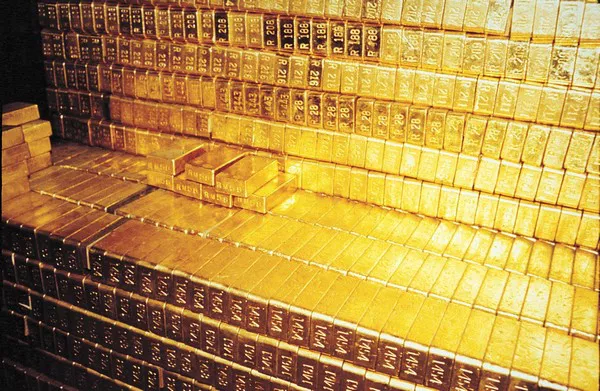Gold prices dropped sharply following the U.S. Federal Reserve’s indication that it plans to slow the pace of monetary policy easing in the coming year, signaling a prolonged period of high interest rates. This hawkish stance led to a stronger U.S. dollar and rising Treasury yields, contributing to a dip in gold prices that lingered near their lowest levels in over a month.
Gold Prices Hit a One-Month Low
On Thursday, gold prices saw a significant decline, with spot gold falling by more than 2% overnight, dropping to $2,588.80 per ounce—the lowest level since November 18. U.S. gold futures mirrored this downward movement, falling 1.9% to $2,602.70.
This drop followed the release of the Federal Reserve’s latest summary of economic projections (SEP), which suggested a cautious approach toward interest rate cuts. The Fed now expects to reduce rates by just 50 basis points by the end of 2025, after a 25 basis point cut bringing them to the 4.25%-4.50% range in the near term.
Federal Reserve’s Hawkish Outlook
Fed Chair Jerome Powell’s remarks added further pressure on gold prices, emphasizing the Fed’s commitment to tackling persistent inflation. While inflation had exceeded year-end projections, Powell stated that policymakers would need to see sustained progress toward inflation reduction before considering more significant rate cuts. This dovish caution indicates that the central bank plans to proceed slowly with rate reductions, leaving the door open for continued high borrowing costs.
Dollar Strengthens as Gold Struggles
The announcement from the Fed had immediate repercussions on the foreign exchange market. Following the release, the U.S. dollar surged to its highest level in two years. The stronger dollar made gold more expensive for buyers holding foreign currencies, further diminishing its appeal as an investment.
In addition, the U.S. Treasury yields spiked, adding to the pressure on gold. As bond yields rise, the opportunity cost of holding non-yielding assets like gold increases, making the yellow metal less attractive to investors seeking income from their assets.
Interest Rates and Inflation Outlook
In its meeting at the end of January, the Federal Reserve is expected to keep its key overnight lending rate unchanged, in line with current market expectations. This ongoing high interest rate environment creates a challenging backdrop for gold, which traditionally thrives during periods of low interest rates.
Traders and analysts are now focusing on upcoming U.S. economic data for further clues on the Fed’s policy direction. Later this week, the U.S. will release key economic indicators, including the Core Personal Consumption Expenditure (PCE) index and GDP data. These reports will offer further insights into inflationary pressures and the health of the broader economy, both of which are crucial to the Fed’s future decision-making.
What Does This Mean for Gold Investors?
For gold investors, the outlook is increasingly uncertain as the Federal Reserve’s hawkish stance casts a shadow over the market. The continued strength of the U.S. dollar and rising Treasury yields present significant headwinds for gold, which has been struggling to maintain its appeal as a safe-haven asset.
While gold has traditionally been viewed as a hedge against inflation, its performance in the current environment will depend heavily on the Fed’s actions in the months ahead. With inflation still above the central bank’s target and economic growth showing signs of slowing, the future path of interest rates will remain a key factor in determining the price of gold.
Looking Ahead: What’s Next for Gold Prices?
As the year progresses, all eyes will be on the Federal Reserve’s next steps. Market participants are bracing for a prolonged period of elevated interest rates, which could continue to weigh on the appeal of non-yielding assets like gold.
The upcoming economic data, including the Core PCE index and GDP figures, will likely offer additional clues on the Fed’s policy stance and could have a significant impact on gold’s trajectory. If inflation remains stubbornly high or if the economy shows signs of overheating, the Fed may opt to keep rates higher for longer, further dampening gold’s prospects.
Conversely, any signs of economic weakness or a sharp decline in inflation could prompt the Fed to ease its tightening cycle sooner than expected, which could provide some relief to gold prices.
Conclusion
In summary, gold prices have taken a hit following the Federal Reserve’s hawkish signals regarding future interest rate cuts. The stronger U.S. dollar and rising Treasury yields have contributed to the precious metal’s decline, with investors now focused on upcoming economic data to gauge the central bank’s next moves.
As long as the Fed maintains its cautious approach to rate cuts and inflation remains above target, gold may continue to face downward pressure. However, shifts in economic conditions could quickly alter the outlook, making the precious metal a key asset to watch in the months ahead.
With the gold market facing significant challenges, investors will need to stay vigilant and ready to adjust their strategies as new data and Fed decisions shape the financial landscape.

